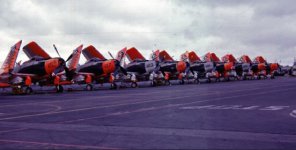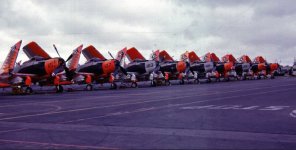klnowak
Charter Member
Richard (tgycgijoes) asked me to take a look at the USS Antietam CV-36 and asked if I could create it. It is the last carrier that
is still missing from the Essex class carriers. After some time working on this model I started to do this carrier.
Since I set a clear time limit for it, it will certainly not be the perfect model, but it should be "usable".
After WW II the USS Antietam CV-36 was rebuilt in 1951 as the first U.S. Navy angled-deck carrier. From 1957, she received further changes during
the dockyard period and from then on, she was in duty as a training-carrier in the US Navy. So I will try to create the carrier in
different construction stages, each of which represents the status of the changes.
It starts with the 1952 USS Antietam CV-36. The pictures below show what I have done so far. The textures are still completely
wrong and there must also be various changes to the hull. But they give an impression of how it develops.
USS Antietam CV-36 in 1954

USS Antietam CV-36 in 1961

And the model from USS Antietam CV-36 in 1952 till now.


is still missing from the Essex class carriers. After some time working on this model I started to do this carrier.
Since I set a clear time limit for it, it will certainly not be the perfect model, but it should be "usable".
After WW II the USS Antietam CV-36 was rebuilt in 1951 as the first U.S. Navy angled-deck carrier. From 1957, she received further changes during
the dockyard period and from then on, she was in duty as a training-carrier in the US Navy. So I will try to create the carrier in
different construction stages, each of which represents the status of the changes.
It starts with the 1952 USS Antietam CV-36. The pictures below show what I have done so far. The textures are still completely
wrong and there must also be various changes to the hull. But they give an impression of how it develops.
USS Antietam CV-36 in 1954

USS Antietam CV-36 in 1961

And the model from USS Antietam CV-36 in 1952 till now.





 Again a fine work...
Again a fine work... 












